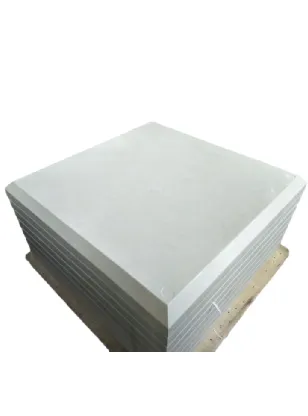loading...
- No. 9, Xingyuan South Street, Dongwaihuan Road, Zaoqiang County, Hengshui, Hebei, China
- admin@zjcomposites.com
- +86 15097380338
- Welcome to visit our website!
marine grating
Marine Grating An Essential Component for Coastal Infrastructure
Marine grating is an important structural element widely used in coastal and marine engineering, offering both functional and aesthetic benefits to various marine applications. As coastal areas are increasingly developed for recreation, tourism, and utility purposes, the demand for effective and reliable marine grating systems is on the rise. In this article, we will explore the various types of marine grating, their applications, advantages, and considerations for use in coastal projects.
Types of Marine Grating
Marine grating generally falls into two categories metal grating and fiberglass reinforced plastic (FRP) grating.
1. Metal Grating This type is commonly made from materials like aluminum or stainless steel. Metal grating is favored for its strength and durability, capable of withstanding harsh marine environments. It's often used in walkways, platforms, and loading docks where heavy loads need to be accommodated. Metal grating typically features an array of openings that allow for visibility and drainage while providing slip resistance.
2. Fiberglass Reinforced Plastic (FRP) Grating FRP grating is increasingly popular due to its corrosion resistance and lighter weight compared to metal grating. It is made by combining fiberglass fibers with a resin, creating a strong yet flexible material that can endure the rigors of marine conditions. This type of grating is ideal for applications such as piers, boat ramps, and fish processing facilities. The non-conductive nature of FRP also makes it a preferred choice in electrical applications.
Applications of Marine Grating
Marine grating is employed in a variety of applications, including
- Walkways and Platforms Grating surfaces are often used in pedestrian walkways and viewing platforms, providing safety and accessibility while offering aesthetic views of marine environments. - Marine Infrastructure Bridges, piers, and docks frequently use marine grating due to its ability to manage water exposure and heavy loads without compromising structural integrity. - Industrial Areas In places like shipyards and oil refineries, grating systems facilitate drainage and ventilation, reducing the risk of slip hazards while allowing for efficient cleaning and maintenance.
- Environmental Protection Grates used in tidal zones help manage sediment movement and protect sensitive ecosystems from erosion.
Advantages of Marine Grating
marine grating

Marine grating offers numerous advantages, making it a reliable choice for coastal infrastructure projects
- Durability Both metal and FRP grating are designed to withstand the abrasive effects of saltwater, UV radiation, and extreme weather, ensuring a long lifespan.
- Safety The designs typically include slip-resistant surfaces essential for marine environments where wet conditions are common.
- Maintenance FRP grating, in particular, requires minimal maintenance due to its resistance to corrosion, reducing long-term operational costs.
- Environmental Considerations With thoughtful design, marine grating can enhance water flow and prevent the buildup of debris, contributing positively to marine ecosystems.
Considerations for Use
When selecting marine grating for a project, several factors should be taken into account
- Load Requirements Understanding the weight and type of traffic that the grating will bear is crucial for ensuring adequate performance under load conditions.
- Environmental Conditions The specific coastal conditions of the installation site—such as salinity, temperature fluctuations, and wave action—will determine the most suitable type of grating material.
- Aesthetic Appeal For projects in recreational areas, the visual appeal of the grating may also be an important consideration, influencing the choice of materials and design.
In conclusion, marine grating plays a pivotal role in the design and construction of coastal infrastructure. By selecting the appropriate type of grating and considering various environmental and aesthetic factors, engineers and designers can significantly enhance both the functionality and beauty of marine projects, ensuring safe and sustainable access to our beautiful coastlines.
-
Premium FRP Handrail for All ApplicationsNewsAug.29,2025
-
Low Maintenance FRP Mini Mesh Grating ProductsNewsAug.29,2025
-
Innovative FRP Square Tubes for Modern Industrial SolutionsNewsAug.29,2025
-
FRP Water Storage Tanks Wholesale Solutions for Bulk BuyersNewsAug.29,2025
-
FRP Molded Grating Solutions for Diverse Industrial ApplicationsNewsAug.29,2025
-
Construction Advancements Through FRP Pultruded ProfilesNewsAug.29,2025
-
Why Choose FRP Railings, Guardrails, and Handrail Systems?NewsAug.29,2025
